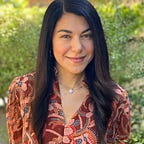A Curator’s Story: Hollis Goodall, Japanese Art @ LACMA*
Sometimes, we get an early start with the thing we love. We don’t know what it will amount to in the future, but we know it’s the thing to hold on to. Hollis Goodall got that lucky start when she first read Pearl S. Bucks’ The Good Earth. That novel introduced her to concepts of Asia and continuity that weren’t a part of the Baptist Texas town she grew up in. Later, at fourteen, she began reading the Tao Te Ching and relished the complications that simmered in the vagueness of the text. The feelings of Asia continued. There began a spark of interest that never left. After graduating with an MA in Oriental (renamed East Asian) Art from the University of Kansas, Goodall moved to Los Angeles and took her first job in the registrar’s office at LACMA. Thirty-five years later, and rising through various ranks, she is one of three curators in LACMA’s Japanese Art department.
An iconic Los Angeles landmark completed in 1988 and Goodall’s home-away-from-home, The Pavilion for Japanese Art adorns the LACMA campus as an architectural destination. Once inside, the lucite railings and brass fixtures curve along an inclined walkway. As the path unravels, you encounter Japanese hanging scrolls from the 16th to 20th centuries. The window panels, reminiscent of Japanese shoji screens, allow for natural light to filter into the gallery. Goodall is regularly surprised by the changes she sees in the artwork at different times of day. The light casts an ever-changing glow on the pieces and the effect is transporting. The ambiance of a small Japanese teahouse is channeled as you view the scrolls on your way to the third floor of the Pavilion. The top floor opens up to the Helen & Felix Juda Gallery where, nestled between permanent collections, rotating exhibits find their home.
The LACMA vaults house about 7,000 objects of Japanese art, of which roughly 250 are shown in the Pavilion. The netsuke exhibit on the ground floor of the Pavilion is about 150 of those objects and the remaining one hundred objects include prints, ceramics, sculpture, lacquer, cloisonné, archaeological material, and a kimono. Goodall schedules constant rotations of the objects in the Pavilion in order to give the vault pieces a viewing opportunity. The current collection is also growing. Generous donations of promised gifts make up a considerable percentage of the newest acquisitions. Recently, Barbara S. Bowman made a gift of over one hundred woodblock prints. Goodall curated the exhibit for these prints, which took place from October 2015 to May 2016, and penned its catalog Living for the Moment. The woodblock prints are now getting much needed rest and will hopefully re-enter the public eye when LACMA’s reconstruction is complete (around 2023).
Goodall has seen many exhibits come and go and some of her favorite ones have been those that introduce Japanese art to people that would normally not be drawn to it. An example of this was the Kitasono Katue: Surrealist Poet exhibit in 2013. Katue’s work in graphic arts and poetry from the 1960s tapped into the LA design scene and brought in a new crowd to the Pavilion. Goodall hopes that this kind of cross-cultural referencing will stimulate new thinking and bring about inspiration.
In this spirit, an exciting cross-departmental exhibit between the Decorative Arts & Design and Japanese Arts is coming in October 2016. The exhibit will feature the chronological history of Awazu Kiyoshi (1929–2009), Japanese graphic artist. Kiyoshi’s work is influenced by late 1960s pop culture and he’s most well-known for his advertising posters. LACMA recently acquired a poster collection of Kiyoshi’s designs and will present his work in the Juda Gallery.
Currently, on exhibit in the Juda Gallery is Japanese Prints and Photographs: Paths Through Modernity. The exhibit is comprised of works both from the LACMA collection and private collections spanning almost 100 years, to the present. Goodall worked with Dan Abbe, UCLA/LACMA Art History Practicum graduate student intern, who co-curated the exhibit. Goodall wanted to bring this exhibit to fruition for some time and Abbe’s immense background in Japanese photography made him the perfect candidate for the job.
The exhibit presents wood block prints, lithographs, and photographs showing a great range of artistic style and expression. Links between Japanese artists and their European influences are made beautifully. Kandinsky’s lithograph, Orange, leads the way through Russian abstraction, then touches on the German avant-garde movement, and comes back to Japan for an output of new, surreal work. The exhibit is lean and each piece is thoughtfully placed to build the arch of Japanese modernism. The overall experience of the show leaves a powerful impression and is on view through September 2016.
As LACMA prepares for its $600 million dollar reconstruction, Goodall has begun to organize her thirty-five years of institutional knowledge and memory. In those years, Goodall has seen a tremendous amount of change at LACMA. Departments in Asian art have been restructured, the Pavilion for Japanese Art was built, and gifts of great value have been acquired and added to the collections. But one thing has not changed, Goodall’s belief that in-person connections with artwork can can allow people to create new perceptions and feelings. Nothing can take the place of viewing art personally, not slides, nor books. She hopes to impart this passion, along with the history and details of the collection, to future curators. As the unseen hand behind the art, Goodall’s work has touched all those who’ve visited the Pavilion. Goodall adds, “Viewing and absorbing art affects how you react. It can be life changing.” It truly can.
*This article is part of the interview series, People in Arts — A Look Behind the Scenes.
